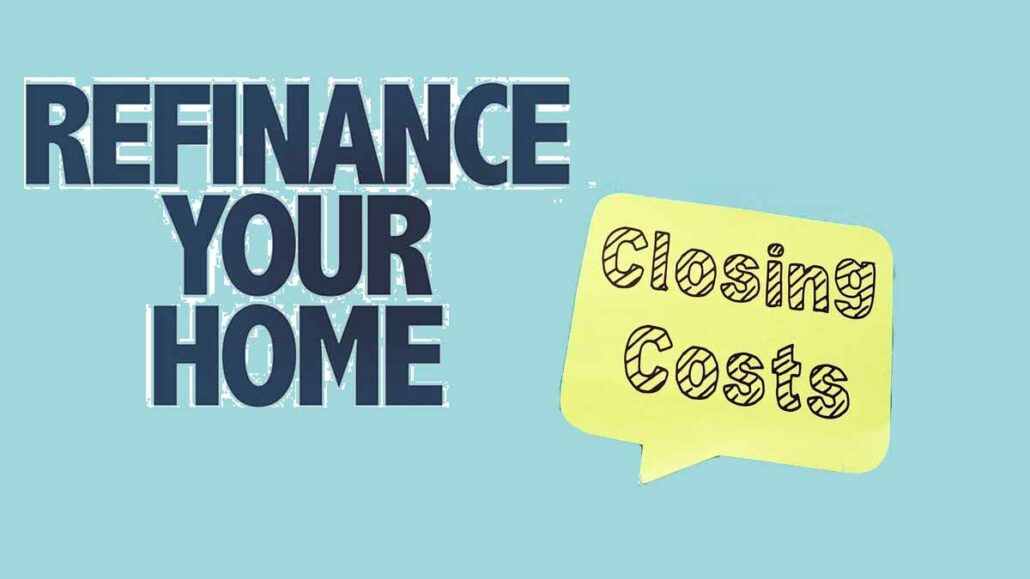Are you thinking about refinancing your mortgage but worried about the upfront closing costs? You’re not alone. Closing costs can be a significant hurdle, but there are options available, including refinancing without closing costs. This guide will explore everything you need to know about this type of refinance, including its pros and cons, how it works, and whether it’s the right choice for you.

What is a No-Closing-Cost Refinance?
In a traditional refinance, you’d pay various closing costs upfront, such as origination fees, appraisal fees, title fees, and recording fees. A no-closing-cost refinance allows you to bypass those upfront payments. However, it’s important to understand that the closing costs aren’t eliminated – they’re simply rolled into your loan balance or offset by a higher interest rate.
How Does it Work?
There are two main ways lenders can structure a no-closing-cost refinance:
- Increased Loan Amount: The lender adds the closing costs to your new loan principal. This increases your monthly payment but keeps your interest rate the same.
- Higher Interest Rate: The lender absorbs the closing costs but charges you a higher interest rate on your new loan. This might result in lower monthly payments initially, but you’ll pay more interest over the life of the loan.
Pros and Cons of Refinancing Without Closing Costs
Pros:
- No upfront cash outlay for closing costs
- Easier to manage finances if you’re short on cash
Cons:
- May result in a higher interest rate, increasing long-term costs
- Increased loan amount can lead to higher monthly payments
Is a No-Closing-Cost Refinance Right for You?
It depends on your financial situation and goals. Here are some factors to consider:
- Your financial goals: Are you prioritizing lower monthly payments or the lowest overall cost of the loan?
- Your credit score: A strong credit score can qualify you for a lower interest rate, making a no-closing-cost option more attractive.
- How long you plan to stay in your home: If you plan to stay for a short time, the benefits of a lower interest rate might not outweigh the upfront cost savings of a no-closing-cost option.
Exploring Your Refinancing Options
Several loan types can be refinanced without closing costs in the USA:
Conventional Refinance: This is the most common option, requiring good credit and a solid down payment.
FHA Refinance: The Federal Housing Administration (FHA) offers government-backed loans with lower credit score requirements and potentially lower closing costs.
VA Refinance: Veterans Affairs offers refinance options for veterans with favorable terms, including potential no-closing-cost options.
Finding the Best Lenders for No-Closing-Cost Refinancing
- Shop around: Compare rates and fees from multiple lenders offering no-closing-cost refinances.
- Ask about lender credits: Some lenders offer credits towards closing costs based on your loan amount or creditworthiness.
- Consider online lenders: Online lenders can sometimes offer competitive rates and streamlined processes for refinancing without closing costs.
Additional Tips for Refinancing Without Closing Costs:
- Negotiate closing costs: Even with a no-closing-cost option, there might be some flexibility in negotiating fees with lenders.
- Improve your credit score: A higher credit score can qualify you for better loan terms and potentially lower closing costs with or without lender credits.
- Consider a lender credit towards closing costs: Some lenders offer credits towards closing costs based on your loan amount or creditworthiness.
FAQs
Can I really refinance with no closing costs?
Technically, no. Closing costs are always there, but with a no-closing-cost refinance, you don’t pay them upfront.
Is a no-closing-cost refinance always a bad deal?
Not necessarily. It depends on your specific situation and how much the higher interest rate or increased loan amount costs you in the long run.
What are some common closing costs associated with refinancing?
Origination fees, appraisal fees, title fees, recording fees, attorney fees, and courier fees.
What are some alternatives to a no-closing-cost refinance?
You can save up for closing costs or consider a traditional refinance where you pay the closing costs upfront.
What are typical closing costs?
Closing costs can vary depending on your location, loan amount, and lender. Common closing costs include origination fees, appraisal fees, title insurance, and recording fees. You can expect to pay between 2% and 5% of your loan amount in closing costs.
Can I negotiate closing costs?
Yes, in some cases, you may be able to negotiate closing costs with your lender. However, lenders are more likely to negotiate if you have good credit and a strong financial profile.
Are there any downsides to a no-closing-cost refinance?
As mentioned earlier, you’ll either pay a higher interest rate or a larger monthly payment. You may also have fewer loan options to choose from.
What are some alternatives to a no-closing-cost refinance?
You can shop around for a lender with lower closing costs. You can also save up the money to cover the closing costs upfront. Another option is a lender credit, which is a cash rebate from the lender that can be used to cover some of the closing costs.
Conclusion
Refinancing without closing costs can be a great way to save money upfront, but it’s important to understand the trade-offs involved. Carefully consider your financial situation and plans for the home before deciding if a no-closing-cost refinance is right for you.

